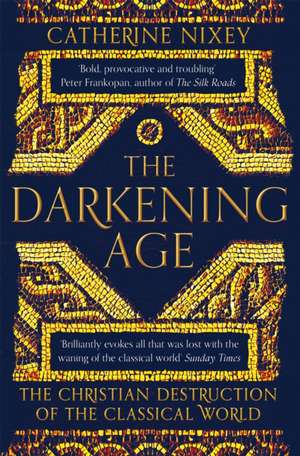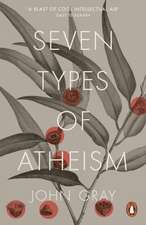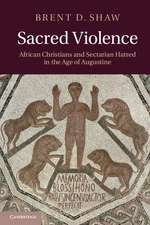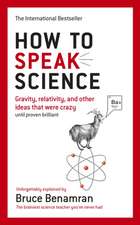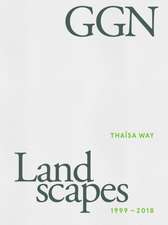The Darkening Age
Autor Catherine Nixeyen Limba Engleză Paperback – 14 iun 2018 – vârsta de la 18 ani
| Toate formatele și edițiile | Preț | Express |
|---|---|---|
| Paperback (2) | 48.52 lei 3-5 săpt. | +33.14 lei 6-12 zile |
| Pan Macmillan – 14 iun 2018 | 48.52 lei 3-5 săpt. | +33.14 lei 6-12 zile |
| HarperCollins Publishers – 15 apr 2019 | 103.48 lei 3-5 săpt. |
Preț: 48.52 lei
Preț vechi: 70.26 lei
-31% Nou
Puncte Express: 73
Preț estimativ în valută:
9.28€ • 9.69$ • 7.68£
9.28€ • 9.69$ • 7.68£
Carte disponibilă
Livrare economică 14-28 martie
Livrare express 27 februarie-05 martie pentru 43.13 lei
Preluare comenzi: 021 569.72.76
Specificații
ISBN-13: 9781509816071
ISBN-10: 1509816070
Pagini: 352
Ilustrații: 16pp plates
Dimensiuni: 128 x 195 x 27 mm
Greutate: 0.28 kg
Editura: Pan Macmillan
Colecția Pan Books
ISBN-10: 1509816070
Pagini: 352
Ilustrații: 16pp plates
Dimensiuni: 128 x 195 x 27 mm
Greutate: 0.28 kg
Editura: Pan Macmillan
Colecția Pan Books
Recenzii
ANew
York
TimesNotable
Book
ANew York Times Book Review Editors’ Choice
Winner of the Royal Society of Literature's Jerwood Award for Nonfiction
Named a Book of the Year by theTelegraph,theSpectator, theObserver,andBBC History Magazine
Named aTimesWriters' Book of the Year
“Nixey paints with a wide brush . . . A fine history that is surely controversial in its view of how victims become victimizers and how professions of love turn to terror.”—Kirkus Reviews
“Nixey clearly but untendentiously summarizes phenomena that led up to the elimination of classical polytheism.”—Booklist
“Captivating and compelling,The Darkening Agechallenges our whole understanding of Christianity’s earliest years and the medieval society that followed. A remarkable fusion of riveting narrative and acute scholarly judgment, this book marks the debut of a formidable classicist and historian.” —Dan Jones, best-selling author ofThe PlantagenetsandThe Templars
“Catherine Nixey has written a bold, dazzling and provocative book that challenges ideas about early Christianity and both how--and why--it spread so far and fast in its early days. Nixey is a witty and iconoclastic guide to a world that will be unfamiliar, surprising and troubling to many.” —Peter Frankopan, best-selling author ofThe Silk Roads
“Engaging and erudite, Catherine Nixey's book offers both a compelling argument and a wonderful eye for vivid detail. It shines a searching spotlight onto some of the murkiest aspects of the early medieval mindset. A triumph.” —Edith Hall, author ofIntroducing the Ancient Greeks
“A devastating book, written in vivid yet playful prose. Catherine Nixey reveals a level of intolerance and anti-intellectualism which echoes today’s headlines but is centuries old.” —Anita Anand, author ofSophiaand coauthor (with William Dalrymple) ofKoh-i-Noor
“Nixey’s elegant and ferocious text paints a dark but riveting picture of life at the time of the ‘triumph’ of Christianity, reminding us not just of the realities of our own past, but also of the sad echoes of that past in our present.” —Michael Scott, author ofAncient Worlds
“[An] impassioned account… Nixey acutely and thunderously reminds us that many used the Christian project as an excuse to destroy rather than to love.”
—BBC History Magazine, “Books of the Year”
“A book for the twenty-first century . . . Nixey has a great story to tell, and she tells it exceptionally well. As one would expect from a distinguished journalist, every page is full of well-turned phrases that leap from the page. She has an expert eye for arresting details, and brings characters and scenarios to life without disguising anything of the strangeness of the world she describes. Most of all, she navigates through these tricky waters with courage and skill . . . A finely crafted, invigorating polemic against the resilient popular myth that presents the Christianisation of Rome as the triumph of a kinder, gentler politics . . . [The Darkening Age] succeeds brilliantly.” —Tim Whitmarsh, Guardian
“A vigorous account . . . Nixey paints with a wide brush, but her point is well taken . . . A fine history that is surely controversial in its view of how victims become victimizers and how professions of love turn to terror.” —Kirkus Reviews
“The Darkening Age by Catherine Nixey looks at the rise of Christianity, showing how its early radical followers ravaged vast swaths of classical culture, sending the West into an era of dogma and intellectual decline.” —Publishers Weekly, “Spring 2018 Announcements: History”
“[A] vivid and important new book . . . Nixey is a funny, lively, readable guide through this dark world of religious oppression . . . The book is also an essential reminder, in the age of Brexit and Donald Trump, that intolerance, ignorance and hostility to cultural diversity are sadly nothing new.” —New Statesman
“Exceptionally well written . . . [A] clever, compelling book.” —Thomas W. Hodgkinson,Spectator
“Sardonic, well informed and quite properly lacking in sympathy for its hapless target . . .The Darkening Agerattles along at a tremendous pace, and Nixey brilliantly evokes all that was lost with the waning of the classical world.” —Peter Thonemann,Sunday Times(UK)
“Nixey has done an impressive job of illuminating an important aspect of late-antique Christianity.” —Levi Roach, Literary Review
“A delightful book about destruction and despair. Nixey combines the authority of a serious academic with the expressive style of a good journalist. She’s not afraid to throw in the odd joke amid sombre tales of desecration. With considerable courage, she challenges the wisdom of history and manages to prevail. Comfortable assumptions about Christian progress come tumbling down.” —Gerard de Groot,The Times(UK)
ANew York Times Book Review Editors’ Choice
Winner of the Royal Society of Literature's Jerwood Award for Nonfiction
Named a Book of the Year by theTelegraph,theSpectator, theObserver,andBBC History Magazine
Named aTimesWriters' Book of the Year
“Nixey paints with a wide brush . . . A fine history that is surely controversial in its view of how victims become victimizers and how professions of love turn to terror.”—Kirkus Reviews
“Nixey clearly but untendentiously summarizes phenomena that led up to the elimination of classical polytheism.”—Booklist
“Captivating and compelling,The Darkening Agechallenges our whole understanding of Christianity’s earliest years and the medieval society that followed. A remarkable fusion of riveting narrative and acute scholarly judgment, this book marks the debut of a formidable classicist and historian.” —Dan Jones, best-selling author ofThe PlantagenetsandThe Templars
“Catherine Nixey has written a bold, dazzling and provocative book that challenges ideas about early Christianity and both how--and why--it spread so far and fast in its early days. Nixey is a witty and iconoclastic guide to a world that will be unfamiliar, surprising and troubling to many.” —Peter Frankopan, best-selling author ofThe Silk Roads
“Engaging and erudite, Catherine Nixey's book offers both a compelling argument and a wonderful eye for vivid detail. It shines a searching spotlight onto some of the murkiest aspects of the early medieval mindset. A triumph.” —Edith Hall, author ofIntroducing the Ancient Greeks
“A devastating book, written in vivid yet playful prose. Catherine Nixey reveals a level of intolerance and anti-intellectualism which echoes today’s headlines but is centuries old.” —Anita Anand, author ofSophiaand coauthor (with William Dalrymple) ofKoh-i-Noor
“Nixey’s elegant and ferocious text paints a dark but riveting picture of life at the time of the ‘triumph’ of Christianity, reminding us not just of the realities of our own past, but also of the sad echoes of that past in our present.” —Michael Scott, author ofAncient Worlds
“[An] impassioned account… Nixey acutely and thunderously reminds us that many used the Christian project as an excuse to destroy rather than to love.”
—BBC History Magazine, “Books of the Year”
“A book for the twenty-first century . . . Nixey has a great story to tell, and she tells it exceptionally well. As one would expect from a distinguished journalist, every page is full of well-turned phrases that leap from the page. She has an expert eye for arresting details, and brings characters and scenarios to life without disguising anything of the strangeness of the world she describes. Most of all, she navigates through these tricky waters with courage and skill . . . A finely crafted, invigorating polemic against the resilient popular myth that presents the Christianisation of Rome as the triumph of a kinder, gentler politics . . . [The Darkening Age] succeeds brilliantly.” —Tim Whitmarsh, Guardian
“A vigorous account . . . Nixey paints with a wide brush, but her point is well taken . . . A fine history that is surely controversial in its view of how victims become victimizers and how professions of love turn to terror.” —Kirkus Reviews
“The Darkening Age by Catherine Nixey looks at the rise of Christianity, showing how its early radical followers ravaged vast swaths of classical culture, sending the West into an era of dogma and intellectual decline.” —Publishers Weekly, “Spring 2018 Announcements: History”
“[A] vivid and important new book . . . Nixey is a funny, lively, readable guide through this dark world of religious oppression . . . The book is also an essential reminder, in the age of Brexit and Donald Trump, that intolerance, ignorance and hostility to cultural diversity are sadly nothing new.” —New Statesman
“Exceptionally well written . . . [A] clever, compelling book.” —Thomas W. Hodgkinson,Spectator
“Sardonic, well informed and quite properly lacking in sympathy for its hapless target . . .The Darkening Agerattles along at a tremendous pace, and Nixey brilliantly evokes all that was lost with the waning of the classical world.” —Peter Thonemann,Sunday Times(UK)
“Nixey has done an impressive job of illuminating an important aspect of late-antique Christianity.” —Levi Roach, Literary Review
“A delightful book about destruction and despair. Nixey combines the authority of a serious academic with the expressive style of a good journalist. She’s not afraid to throw in the odd joke amid sombre tales of desecration. With considerable courage, she challenges the wisdom of history and manages to prevail. Comfortable assumptions about Christian progress come tumbling down.” —Gerard de Groot,The Times(UK)
Notă biografică
CATHERINE NIXEY studied classics at Cambridge and taught the subject for several years before becoming a journalist on the arts desk at the Times (UK), where she still works.
Extras
Satan
knew
how
to
tempt
St.
Antony.
One
day,
in
a
far
corner
of
the
Roman
Empire,
in
Egypt,
this
prosperous
young
man
caught
the
attention
of
the
Evil
One
when
he
did
something
that
was
at
the
time
very
unusual.
Aged
about
twenty,
Antony
walked
out
of
his
house,
sold
his
possessions,
gave
all
his
land
away
and
went
to
live
in
a
pigsty.
The Roman world of AD 270 was not one that usually celebrated the simple life. Indeed, if he had looked out across this realm at this time then Satan might have allowed himself a satisfied glow that his work had been well done. The sins of lust, gluttony and avarice stalked the land. Where once the aristocrats of Rome had prided themselves on wearing simple home-woven tunics, now the wealthy strode about sweating under scarlet fabrics that gleamed with embroidered gold. Women were even worse, wearing jewel-encrusted sandals and expensive silk dresses so diaphanous that every curve of their bodies could be seen even when fully dressed. Where once upon a time Roman noblemen had boasted of enjoying fortifyingly cold swims in the swirling Tiber, this generation preferred to go to the baroquely decorated bathhouses, taking with them countless rattling silver bottles of ointment.
The behavior inside those steamy rooms was said to be wanton. Women stripped naked and allowed slaves, their fingers gleaming with oil, to rub every inch of their bodies. Men and women bathed together, each one “divesting themselves of their modesty,” as one observer put it, “along with their tunic.” That writer, in his embarrassment, only managed to mutter in abstract nouns about the “lust” and “licentious indulgence” that might brew in those humid rooms. The frescoes in Pompeian bathhouses were rather more precise. In one changing room, above a shelf where bathers left their clothes, was a small painting of a man performing oral sex on a woman. Indeed, above each of the shelves in that room was a different image: a threesome above one, lesbian sex above another, and so on. A rather more memorable method, it has been speculated, of marking where you left your clothes than a locker number.
Had Satan looked at the empire’s dining tables then he might have concluded with satisfaction that the behavior here was little better. Centuries before, the emperor Augustus had (somewhat ostentatiously) relished a simple diet of coarse bread and handmade cheese. Such parsimoniousness didn’t last: soon, gourmands were supping one-hundred-year-old wines cooled with snow water out of jeweled goblets and sourcing their oysters from Abydos. All this, while many starved. Though not even those at the best tables could be sure of the best food and drink: in this showy, hierarchical world, hosts stratified the wine they served their guests, giving the worst wine to the least important diners, the mediocre wine to mediocre men and the best wine to the best men.
The young Antony, before he set out to that pigsty, had been the sort of man who could, in time, have earned the finer wines at dinner. He was a provincial, true, but he was also youthful, handsome, fit and healthy; he had been offered a reasonable education (even if, in the time-honored way of privileged young men, he had declined to make the most of it), and he was wealthy: he had recently inherited hundreds of acres of enviably good farmland. He was at just the age when a man ought to start making his mark on the world.
Instead, Antony abandoned it all. Not long after his parents’ deaths, he had been in church when he heard a chapter from the Gospel of Matthew being read. “If thou wilt be perfect,” it said, “go and sell that thou hast, and give to the poor, and thou shalt have treasure in heaven.” And he had promptly done so. Fifteen years later, Antony — soon he would become so famous that he could be known by this name alone — decided to go even farther, setting out to live in a deserted Roman fort on the edge of the Egyptian desert where he stayed for twenty years. Later, he would go farther still, making his home on a mountain by the Red Sea. He would stay there until he died in AD 356.
Antony was not one of the empire’s gourmands. No Sicilian lampreys for him; instead he ate only bread, salt and water — and precious little of that, eating only once a day, after sunset. It can’t have been a meal to look forward to: while he was in the fort, bread was brought to him only twice a year. Little about his life would have whetted the appetite of an aesthete. Antony slept on a simple rush mat, covering himself with a goats’-hair blanket. Often he didn’t sleep at all, preferring to spend the whole night awake in prayer. While other young men daubed themselves with expensive perfumes and ointments, and plucked their hair so assiduously that (the moralists muttered) it was impossible to tell the jawlines of young men from those of women, Antony scorned his body. He assaulted it on a daily basis, refusing to use oils to anoint and clean it, and instead wore a hair shirt and never washed. He only cleaned the mud from his feet when he happened to cross a stream. It was said that no one saw his body naked until he died.
His was a life devoted to isolation, humility (or, to give it a less Christian gloss, humiliation) and self-abnegation. Yet just a few decades after his death, Antony became a celebrity. The story of his life, written down by a bishop named Athanasius, was a literary sensation, devoured by readers from Egypt to Italy, and remained a bestseller for centuries. Young men read this account of punishing self-denial and, inspired, headed out into the desert in imitation. So many men went, it was said, that the desert was made a city by monks. Centuries later, Antony would be revered as the founding father of monasticism; one of the most influential men in the history of Christianity. A few years after his death, people had already started to recognize his importance. When St. Augustine heard the story of Antony’s austere life he was apparently so moved by its power that he rushed out of the house into the garden, tore his hair and beat his head with his hands. Such simple men, he said, were rising up and taking “heaven by force.”
Not everyone was so delighted. According to Antony’s biographer, Athanasius, Satan looked on the hair shirt–wearing, sleepless saint and was revolted. This was intolerable virtue in one so young and so the Prince of Darkness had to act. He was in no doubt what form his attack should take: Antony was a man who scorned the pleasures of the flesh and so it was with the pleasures of the flesh that he would be tempted. Unclean thoughts were, Athanasius explains, Satan’s standard weapon for tempting youths, and so he began sending seductive dreams to disturb the young innocent by night. Alas, the holy Antony was a match for this: he pushed them away with the power of constant prayer.
The Devil was forced to move to a second-tier temptation. One night the thwarted Satan turned himself into the form of a beautiful young woman omitting, adds Athanasius — a master of the intriguing aside — “no detail that might provoke lascivious thoughts.” Antony struggled but stood firm by calling to mind “the fiery punishment of hell and the torment inflicted by worms.” Satan gnashed his teeth with fury; but he wasn’t done yet. He decided to send his trump card: an apparition in the form of a young black boy who prostrated himself at Antony’s feet. As he lay there the demon announced that he was the “friend of fornication” and bragged about how many chaste souls he had led astray. Antony responded by singing a psalm, an act that was, even then, so anaphrodisiac that the boy instantly vanished.
Antony might have won these early battles but his war with evil was far from over. Over the following decades, as he moved about the emptiness of the desert, he faced repeated demonic onslaught. He was beaten so severely by demons that he was unable to speak.
The Roman world of AD 270 was not one that usually celebrated the simple life. Indeed, if he had looked out across this realm at this time then Satan might have allowed himself a satisfied glow that his work had been well done. The sins of lust, gluttony and avarice stalked the land. Where once the aristocrats of Rome had prided themselves on wearing simple home-woven tunics, now the wealthy strode about sweating under scarlet fabrics that gleamed with embroidered gold. Women were even worse, wearing jewel-encrusted sandals and expensive silk dresses so diaphanous that every curve of their bodies could be seen even when fully dressed. Where once upon a time Roman noblemen had boasted of enjoying fortifyingly cold swims in the swirling Tiber, this generation preferred to go to the baroquely decorated bathhouses, taking with them countless rattling silver bottles of ointment.
The behavior inside those steamy rooms was said to be wanton. Women stripped naked and allowed slaves, their fingers gleaming with oil, to rub every inch of their bodies. Men and women bathed together, each one “divesting themselves of their modesty,” as one observer put it, “along with their tunic.” That writer, in his embarrassment, only managed to mutter in abstract nouns about the “lust” and “licentious indulgence” that might brew in those humid rooms. The frescoes in Pompeian bathhouses were rather more precise. In one changing room, above a shelf where bathers left their clothes, was a small painting of a man performing oral sex on a woman. Indeed, above each of the shelves in that room was a different image: a threesome above one, lesbian sex above another, and so on. A rather more memorable method, it has been speculated, of marking where you left your clothes than a locker number.
Had Satan looked at the empire’s dining tables then he might have concluded with satisfaction that the behavior here was little better. Centuries before, the emperor Augustus had (somewhat ostentatiously) relished a simple diet of coarse bread and handmade cheese. Such parsimoniousness didn’t last: soon, gourmands were supping one-hundred-year-old wines cooled with snow water out of jeweled goblets and sourcing their oysters from Abydos. All this, while many starved. Though not even those at the best tables could be sure of the best food and drink: in this showy, hierarchical world, hosts stratified the wine they served their guests, giving the worst wine to the least important diners, the mediocre wine to mediocre men and the best wine to the best men.
The young Antony, before he set out to that pigsty, had been the sort of man who could, in time, have earned the finer wines at dinner. He was a provincial, true, but he was also youthful, handsome, fit and healthy; he had been offered a reasonable education (even if, in the time-honored way of privileged young men, he had declined to make the most of it), and he was wealthy: he had recently inherited hundreds of acres of enviably good farmland. He was at just the age when a man ought to start making his mark on the world.
Instead, Antony abandoned it all. Not long after his parents’ deaths, he had been in church when he heard a chapter from the Gospel of Matthew being read. “If thou wilt be perfect,” it said, “go and sell that thou hast, and give to the poor, and thou shalt have treasure in heaven.” And he had promptly done so. Fifteen years later, Antony — soon he would become so famous that he could be known by this name alone — decided to go even farther, setting out to live in a deserted Roman fort on the edge of the Egyptian desert where he stayed for twenty years. Later, he would go farther still, making his home on a mountain by the Red Sea. He would stay there until he died in AD 356.
Antony was not one of the empire’s gourmands. No Sicilian lampreys for him; instead he ate only bread, salt and water — and precious little of that, eating only once a day, after sunset. It can’t have been a meal to look forward to: while he was in the fort, bread was brought to him only twice a year. Little about his life would have whetted the appetite of an aesthete. Antony slept on a simple rush mat, covering himself with a goats’-hair blanket. Often he didn’t sleep at all, preferring to spend the whole night awake in prayer. While other young men daubed themselves with expensive perfumes and ointments, and plucked their hair so assiduously that (the moralists muttered) it was impossible to tell the jawlines of young men from those of women, Antony scorned his body. He assaulted it on a daily basis, refusing to use oils to anoint and clean it, and instead wore a hair shirt and never washed. He only cleaned the mud from his feet when he happened to cross a stream. It was said that no one saw his body naked until he died.
His was a life devoted to isolation, humility (or, to give it a less Christian gloss, humiliation) and self-abnegation. Yet just a few decades after his death, Antony became a celebrity. The story of his life, written down by a bishop named Athanasius, was a literary sensation, devoured by readers from Egypt to Italy, and remained a bestseller for centuries. Young men read this account of punishing self-denial and, inspired, headed out into the desert in imitation. So many men went, it was said, that the desert was made a city by monks. Centuries later, Antony would be revered as the founding father of monasticism; one of the most influential men in the history of Christianity. A few years after his death, people had already started to recognize his importance. When St. Augustine heard the story of Antony’s austere life he was apparently so moved by its power that he rushed out of the house into the garden, tore his hair and beat his head with his hands. Such simple men, he said, were rising up and taking “heaven by force.”
Not everyone was so delighted. According to Antony’s biographer, Athanasius, Satan looked on the hair shirt–wearing, sleepless saint and was revolted. This was intolerable virtue in one so young and so the Prince of Darkness had to act. He was in no doubt what form his attack should take: Antony was a man who scorned the pleasures of the flesh and so it was with the pleasures of the flesh that he would be tempted. Unclean thoughts were, Athanasius explains, Satan’s standard weapon for tempting youths, and so he began sending seductive dreams to disturb the young innocent by night. Alas, the holy Antony was a match for this: he pushed them away with the power of constant prayer.
The Devil was forced to move to a second-tier temptation. One night the thwarted Satan turned himself into the form of a beautiful young woman omitting, adds Athanasius — a master of the intriguing aside — “no detail that might provoke lascivious thoughts.” Antony struggled but stood firm by calling to mind “the fiery punishment of hell and the torment inflicted by worms.” Satan gnashed his teeth with fury; but he wasn’t done yet. He decided to send his trump card: an apparition in the form of a young black boy who prostrated himself at Antony’s feet. As he lay there the demon announced that he was the “friend of fornication” and bragged about how many chaste souls he had led astray. Antony responded by singing a psalm, an act that was, even then, so anaphrodisiac that the boy instantly vanished.
Antony might have won these early battles but his war with evil was far from over. Over the following decades, as he moved about the emptiness of the desert, he faced repeated demonic onslaught. He was beaten so severely by demons that he was unable to speak.
